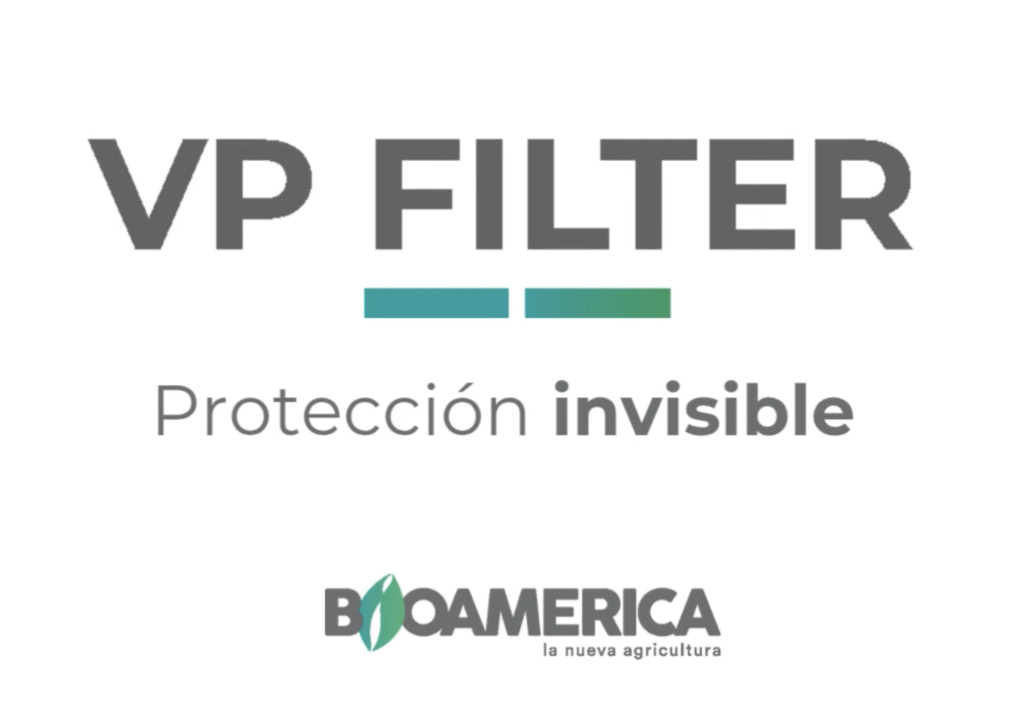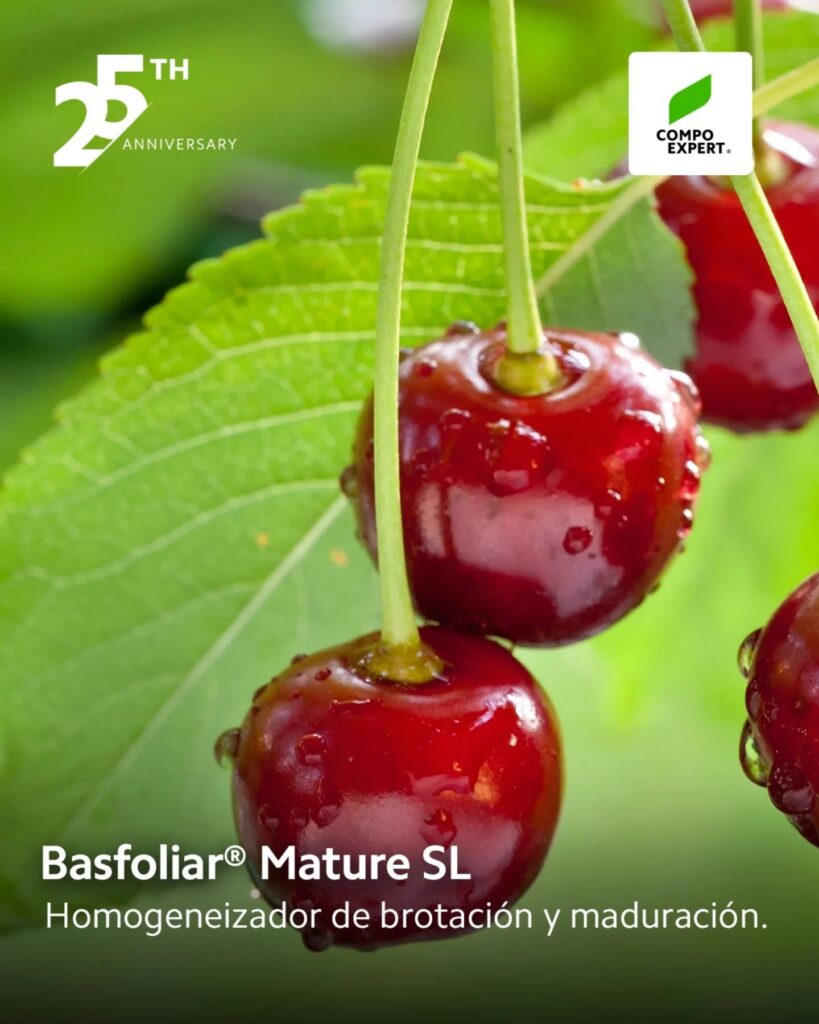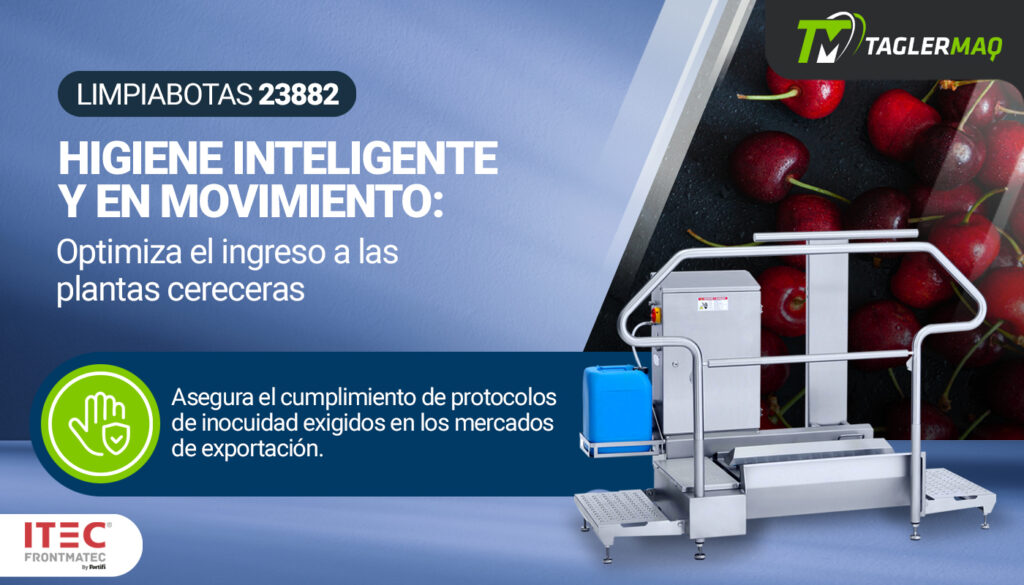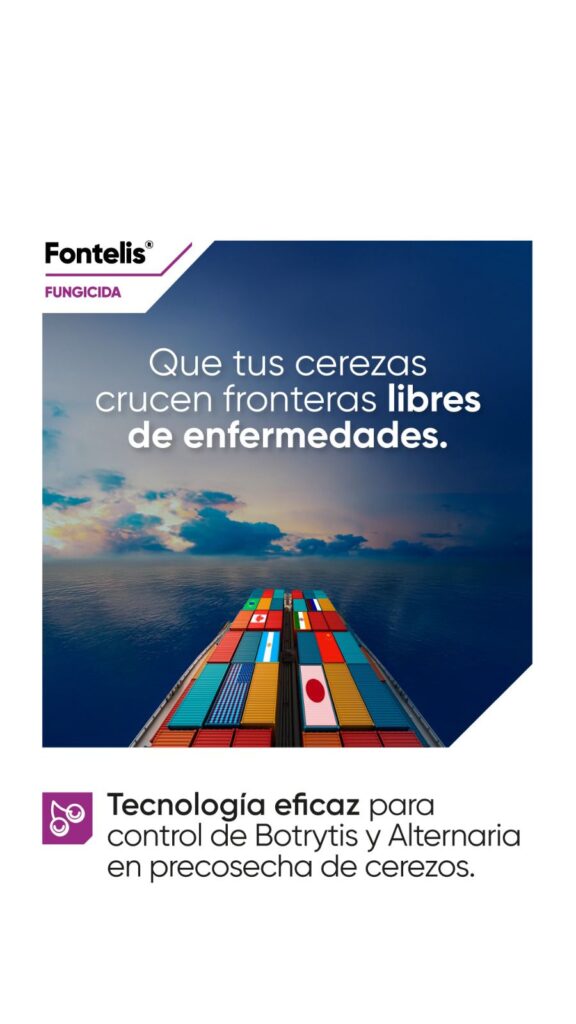By: Francisca Barros, Militza Ivelic and Jessica Rodríguez – Kimün Spa Trio.
Cherries are a fruit that is sensitive to mechanical damage, so the movement on the line is done by water. The water is then used in recirculation tanks where we must ensure its safety in terms of controlling microorganisms that are dangerous to human health, as well as avoiding the presence of phytopathogenic fungi that could cause post-harvest rot.
To sanitize process water, the most widely used product in the industry has been chlorine, with sodium hypochlorite being the main source and currently calcium hypochlorite.
What are the advantages and disadvantages of this sanitizer?:
Hypochlorites are cheap products that are highly reactive with organic matter, which is the main problem. Because of the way cherries are harvested, the dirt present in them is dragged along, polluting the water, so more product must be constantly added to maintain an adequate concentration that ensures microbiological control.
The technical information collected indicates that the control dose using hypochlorites for microorganisms (such as Eschericha coli, Listeria and Salmonella) that cause damage to humans is 1 to 2 ppm. The situation is different when we want to control phytopathogenic microorganisms where a minimum dose of 20 ppm is required.
A problem also mentioned in the technical literature refers to the decrease in the effectiveness of hypochlorites depending on the pH of the water. At an acidic pH (<5) there is a risk of volatility, which could affect people's work, while at very basic pH (>7.5) their effectiveness is lost. As a result of this, the industry worked with these sanitizers at high concentrations, without controlling the pH (100-120 ppm). Currently, the use of these sources is questioned due to the perchlorate and chlorate residues left on the fruit. In Europe, for example, Regulation (EU) 2020/685 establishes a Maximum Residue Limit (MRL) for chlorate in fruits and vegetables of 0.05 ppm.
Considering the restrictions indicated on fruit residues and because we must work in a more sustainable way, hypochlorite applications have been changing towards automation, where pH adjustment and dosing have allowed concentrations to be lowered to levels of 20 to 40 ppm.
Most of the systems used in cherry orchards are ORP (oxidation reduction potential) equipment, but other chlorine dosing systems are also emerging (Photo 1).


Photo 1. Automatic equipment to verify sanitizer concentrations, ORP system and direct ppm measurements.
To monitor the concentration of sanitizer in process water, the industry initially used the titration method with chemical reagents. Currently, photometers adapted to measure high concentrations are used and to quickly verify the concentration, test strips are also used (photo 2).


Photograph 2. Photometer and chlorine indicator strips to verify free chlorine concentrations in process line water.
Another way of providing a chlorinated source is through halogenated compounds (sodium hypochlorite and chlorite), which have the advantage of being less reactive to organic matter and do not give off aromas, in addition to not requiring pH adjustment. The application of these products can also be carried out automatically and the concentrations used vary between 50-80 ppm.
There are other sanitizers in the industry that are less questioned due to residues, such as peracetic acid. The formulations are varied and we must be clear that when using them we must consider the one that allows contact with the fruit. Due to the strong smell in the distribution containers, manual application is impractical and requires the use of automatic dosing equipment. The recommended working doses vary between 40 and 80 ppm.
Among the sanitizers offered in the cherry industry is ozone, but it is not widely used and requires equipment that generates the product “on site” and injects it into the water.
Regarding the fungicides applied in the processing lines, we must go step by step and the first thing is to understand that said application is carried out with the objective of protecting healthy fruit from contamination, by contact, from some fruit with latent infection that we pack without realizing.
In cherries, the application method of these products has always been by immersion and has also varied over time, from a small “drench” well at the end of the line, to today when it is used in distribution channels after calibration (Photo 3). In this application, the exposure time is closely related to the residual left on the fruit, which we expect to be around 1 ppm.

Photograph 3. Application of fungicide in post-calibration distribution channels.
Regarding which fungicide to use in post-harvest, we must ensure that it is permitted in the destination markets and that it has the authorizations for its use in post-harvest and that it has the registration label in Chile for cherries.
Since the fruit goes to different markets, we must try to use the one that is permitted in the largest number of countries and make it compatible with its effectiveness in controlling the phytopathogenic fungi of interest.
Currently, we have five molecules for post-harvest application (Table 1), the most commonly used being “Fludioxonil”. This molecule has also been used in hydrocoolers or in showers immediately after the hydrocooler. These applications are carried out when the processing time is longer than two days of storage or in the event that a rain event occurs during the harvest. The choice of this product was due to its efficiency in controlling phytopathogenic fungi but also because it does not present incompatibility with chlorine concentrations in the water.

Table 1. Maximum residue limits per market for post-harvest cherries. Extract from the Asoex Pesticides Agenda (August 2021).
Of the five alternatives mentioned above, two other molecules used in the industry are: “tebuconazole”, generally as a complement to another fungicide for the control of Geotrichum, which although not so common, is sometimes present in cherries. Unfortunately, for Europe this product only has an MRL of 1 ppm, which makes it restrictive and many times for safety reasons, in order to avoid detections above this threshold, it is eliminated from the programming in the lines.
The third molecule used is “pyrimethanil” which when applied cannot be used with chlorine since there is a reaction and in those cases the sanitizer used has been peracetic acid.
Regardless of the fungicide used, we must be aware that the application operation in large ponds brings with it some complications that we must be aware of. One of these complications is the generation of foam due to high turbulence. It can also happen that due to the unevenness of the water present by the machines, air enters the system and foam is generated. This foam on the one hand carries away the active ingredient, and on the other hand, there is a risk of staining the fruit.
Another problem is that the suspension due to low movement or agitation causes the ingredient to precipitate and therefore we will have less concentration in suspension and therefore less residual.
Fungicide applications on the lines are done manually, but there is currently progress in automating the process. In this way, a more even residual on the fruit has been achieved and the risks of product handling by personnel are minimized, since the machinery is in charge of dosing and products are only added to the extent that the reserves in the tanks are consumed.








